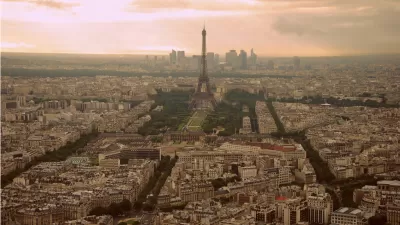World annual death toll due to particulate pollution from indoor and outdoor sources is 2 million people each year, according to a new report from the World Health Organization.
"The WHO said these tiny particles -- known as PM10 because they're 10 millimeters or less -- can penetrate the lungs, enter the bloodstream and cause heart disease, lung cancer, asthma and acute lower respiratory infections. The WHO recommends PM10 not exceed 20 micrograms per cubic meter as an annual average, but the data show it has reached 121 micrograms in Beijing and exceeded 200 in several cities in India and Pakistan. The global average was 71."
By contrast, the most polluted areas in the U.S. were well below the global average but above the WHO maximum of 20 micrograms.
According to the Environmental Protection Agency, "the overall mean was 18 micrograms per cubic meter in 2008 for the 375 locations that the WHO studied. It ranged from 7 in a few areas to 15 in Des Moines and San Francisco, 16 in San Antonio, Seattle and Boston, 19 in Philadelphia, 20 in Detroit, 24 in Phoenix, 25 in Los Angeles, Pittsburgh and San Diego, 35 in Fresno and 38 in Bakersfield, Calif."
FULL STORY: WHO: Air pollution kills more than 2 million annually

Planetizen Federal Action Tracker
A weekly monitor of how Trump’s orders and actions are impacting planners and planning in America.

Maui's Vacation Rental Debate Turns Ugly
Verbal attacks, misinformation campaigns and fistfights plague a high-stakes debate to convert thousands of vacation rentals into long-term housing.

Restaurant Patios Were a Pandemic Win — Why Were They so Hard to Keep?
Social distancing requirements and changes in travel patterns prompted cities to pilot new uses for street and sidewalk space. Then it got complicated.

In California Battle of Housing vs. Environment, Housing Just Won
A new state law significantly limits the power of CEQA, an environmental review law that served as a powerful tool for blocking new development.

Boulder Eliminates Parking Minimums Citywide
Officials estimate the cost of building a single underground parking space at up to $100,000.

Orange County, Florida Adopts Largest US “Sprawl Repair” Code
The ‘Orange Code’ seeks to rectify decades of sprawl-inducing, car-oriented development.
Urban Design for Planners 1: Software Tools
This six-course series explores essential urban design concepts using open source software and equips planners with the tools they need to participate fully in the urban design process.
Planning for Universal Design
Learn the tools for implementing Universal Design in planning regulations.
Heyer Gruel & Associates PA
JM Goldson LLC
Custer County Colorado
City of Camden Redevelopment Agency
City of Astoria
Transportation Research & Education Center (TREC) at Portland State University
Jefferson Parish Government
Camden Redevelopment Agency
City of Claremont



























